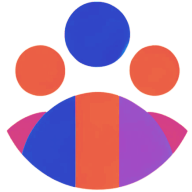How Diversity Frameworks Attract and Retain Top Talent
In today's competitive job market, organizations are increasingly recognizing the power of diversity to drive innovation and success. This article delves into how effective diversity frameworks can be a game-changer in attracting and retaining top talent across industries. Drawing on insights from experts in the field, readers will discover practical strategies for creating inclusive cultures, implementing intentional diversity approaches, and utilizing techniques like blind resumes and mentorship programs to boost retention.
- Inclusive Culture Attracts Diverse Talent
- Intentional Diversity Approach Yields Unique Perspectives
- Blind Resumes and Mentorship Boost Retention
Inclusive Culture Attracts Diverse Talent
At Estorytellers, a standout moment for us was when we hired a gifted writer from a small town who had never worked in a formal creative environment before.
Our diversity framework prioritizes skill and individual voice over conventional credentials, and that openness allowed us to find some incredible talent we might have otherwise missed. What helped keep them around wasn't just the opportunity—it was the inclusive atmosphere we cultivated. We encouraged them to include their cultural expressions in their writing, provided flexible schedules, and paired them with a mentor who guided their growth without any judgment.
The key takeaway here is to build a space where people feel acknowledged, respected, and supported beyond their work. It truly makes a significant impact on retention and growth.
Intentional Diversity Approach Yields Unique Perspectives
At Spectup, we've never viewed diversity as a checkbox exercise—it's something that organically evolved from the way we work with startups and investors across different markets. I recall a period when we were scaling our venture scout program, and we had open roles for analysts and partnership leads. Traditionally, these roles tend to attract a fairly homogeneous crowd. However, instead of relying on our usual channels, we opened up applications through communities that specifically support women in tech, Black founders, and first-generation professionals in finance.
One of our current analysts—she came from a completely non-traditional background, without an Ivy League badge or fancy accelerator pedigree. Yet her insights into emerging markets were sharper than those of most partners I've seen pitch to us. She later told me that Spectup felt like one of the few places that didn't just tolerate difference, but actually sought it out. That statement stuck with me.
The key factor, honestly, was how intentional we were about making people feel like they belonged before they even joined. We didn't just post the role—we rewrote the language, stripped out buzzwords, and talked directly about how non-linear paths bring value. It's not about creating a "diverse" team for optics. It's about seeing talent others overlook—and giving them a seat, not just a shot.

Blind Resumes and Mentorship Boost Retention
Talmatic's diversity model helped to attract and retain underrepresented top talent when we revolutionized our hiring process by introducing diverse interview panels and blind resumes.
Among the most vital of these initiatives was creating a welcoming environment where employees felt valued and heard, supported by mentorship programs that introduced new hires to leaders from similar backgrounds.
This approach not only improved retention but also produced feelings of belonging that helped to enhance team performance.



